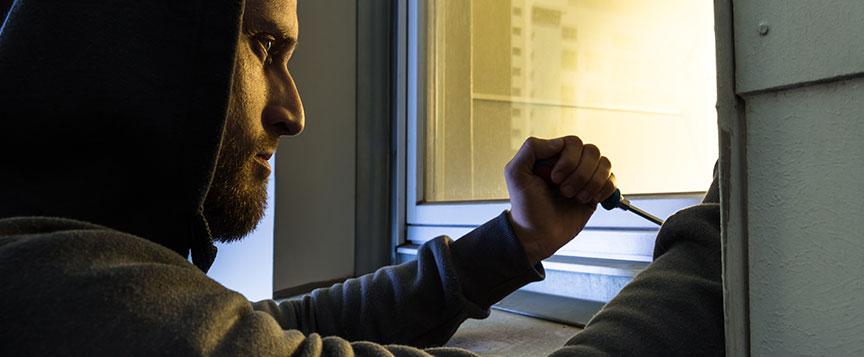DuPage County Criminal Damage to Property Defense Attorney

Lawyers Defend Clients Charged with Vandalism in Westmont and Downers Grove
Vandalism encompasses a variety of offenses, from painting graffiti to slashing tires to breaking windows. Some acts might seem relatively harmless or low-risk, such as spray-painting a wall or throwing a stone at a protest rally. But sometimes a small act can have unintended and serious consequences, even triggering an escalating pattern of retaliation.
State law places a high priority on protecting individual property rights and prescribes tough sentences for those who intentionally damage or deface another's real or personal property.
At Kathryn L. Harry & Associates, P.C., we understand that a seemingly harmless activity can sometimes spiral out of control, resulting in thousands of dollars worth of property damage. If you have been charged with criminal damage or defacement, you could end up with a felony conviction on your record. You will need legal counsel to protect your rights and mitigate the impact on your life. Our attorneys have the knowledge and experience to defend you against such charges in DuPage County and surrounding areas. We will help you understand the law as it applies to the details of your case and provide an aggressive defense, aiming to get criminal charges and penalties reduced or dismissed entirely.
Definition and Penalties for Criminal Defacement in Illinois
Illinois law (720 ILCS 5/21-1.3) defines criminal defacement of property as damage knowingly done to another's property by the use of paint, pen, marker, etching tool, or any similar substance or device.
Criminal defacement can be charged at a minimum as a Class A misdemeanor and at maximum as a Class 3 felony, depending on the type of property, amount of damage, and the offender's record. For example, a first-time offense involving damage not exceeding $500 can be charged as a Class A misdemeanor, while a repeat offense or damage over $500 can be charged as a Class 4 felony. In addition to any other sentence, a convicted offender must pay for the repair of the defaced property and perform community service.
Definition and Penalties for Criminal Damage to Property
Illinois law (720 ILCS 5/21-1) defines the following actions, when done knowingly to another's property and without the owner's consent, as criminal damage to property:
- Damages property by any means, including by reckless use of fire or explosives (but excluding intentional arson, which is a separate crime); starts a fire on another's land, or deposits a stink bomb or other offensive smelling compound with the intent to interfere with another's use of the land or building.
- Damage up to $500: Class A misdemeanor
- Damage up to $10,000: Class 4 felony
- Damage up to $100,000: Class 3 felony
- Damage over $100,000: Class 2 felony
- If the damage was done to a school, place of worship, farm equipment/buildings, or a memorial to armed forces or protective services: Starts at a Class 4 felony and rises by dollar value up to a Class 1 felony.
- If the damage was done to government supported property: Starts at a Class 3 felony and rises by dollar value to a Class 1 felony (720 ILCS 5/21-1.01).
- Injures a domestic animal: Starts at a Class 4 felony for damage under $10,000 and rises by dollar value up to a Class 2 felony. (This is distinct from the crimes of cruelty to companion/service animals and animal torture as defined in 510 ILCS 70 / Humane Care for Animals Act.)
- Shoots a firearm at a railroad train: Class 4 felony.
- Tampers with, defaces or damages fire-fighting equipment including hydrants: Class B misdemeanor.
In addition to the usual penalties for the charged crime, all offenders not sentenced to jail time must perform community service as part of their sentence and, when the damages exceed $10,000, pay a fine equal to the value of the damages.
Related Crimes: A separate set of laws applies to vandalism of official street, highway, railroad, and traffic control signs and signals (625 ILCS 5/11-311 to 11-313). This offense is a Class A misdemeanor with a statutory minimum fine of $250. Another related crime is vehicular endangerment (720 ILCS 5/12-5.02), defined as dropping an object from an overpass or other elevated location with the intent of striking a motor vehicle; this offense is classified as a Class 2 felony unless a death results, in which case it is elevated to a Class 1 felony. If the damage was committed while trespassing on another's property, you can also be charged with criminal trespass.
Defense against Criminal Damage or Defacement Charges
If you have been charged with criminal defacement or damage to property, you face costly and potentially life-altering penalties. You could spend time in jail and have a felony conviction on your record. You need the help of a skilled defense attorney who knows the ins and outs of the local court system and who will fight aggressively to get you the best possible outcome. The attorneys of Kathryn L. Harry & Associates, P.C. have decades of experience defending clients against charges such as criminal damage and defacement. For a free consultation, contact our office at 630-472-9700. We provide legal counsel to clients in Addison, Downers Grove, Elmhurst, Hinsdale, Lombard, Oak Brook, Wheaton, and Westmont.
 1200 Harger Road, Suite 830, Oak Brook, IL 60523
1200 Harger Road, Suite 830, Oak Brook, IL 60523







